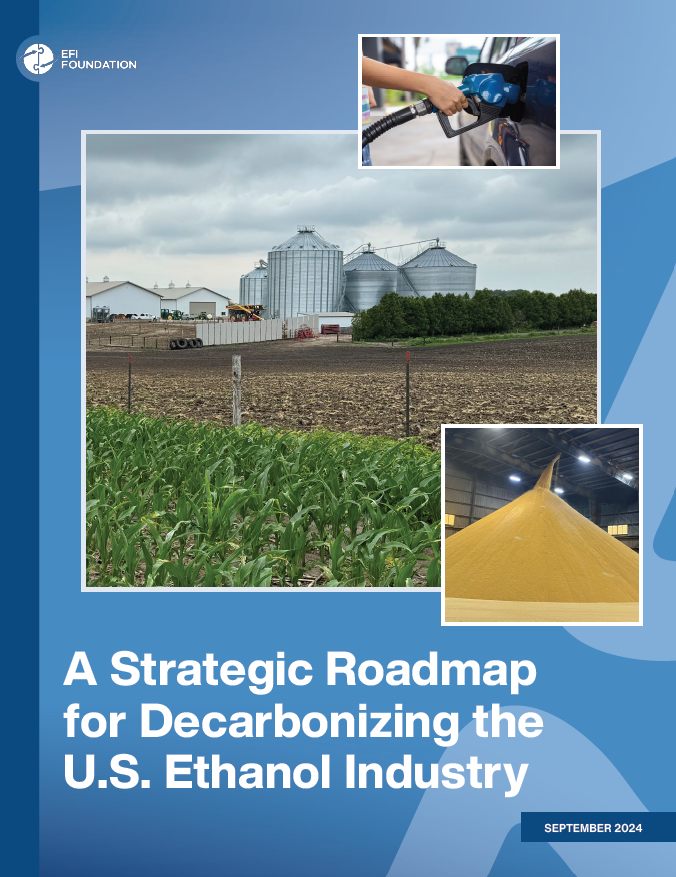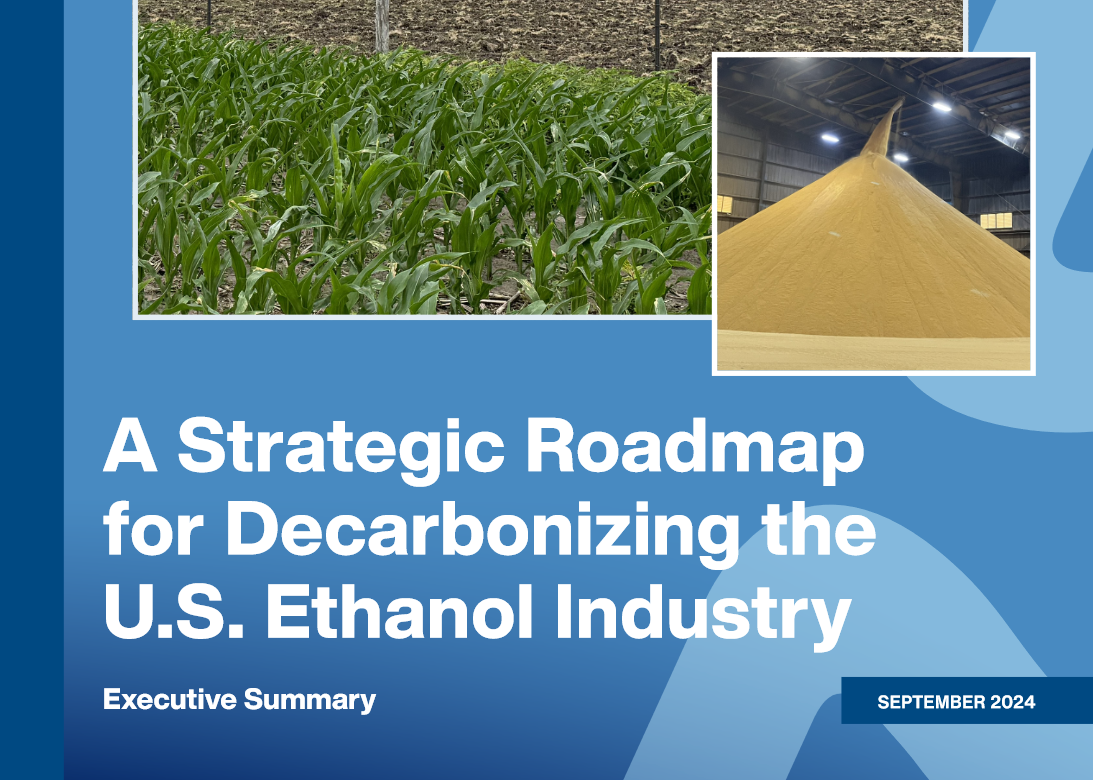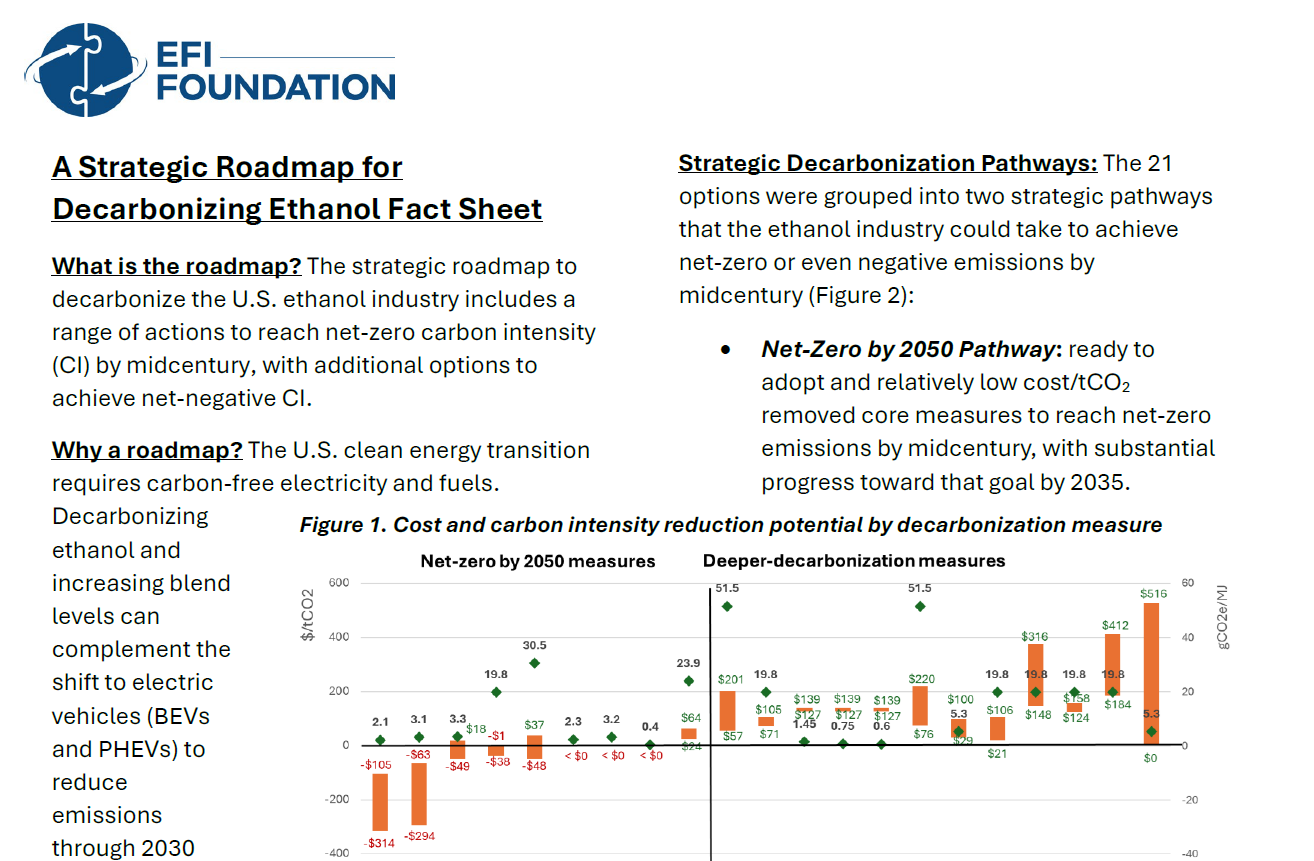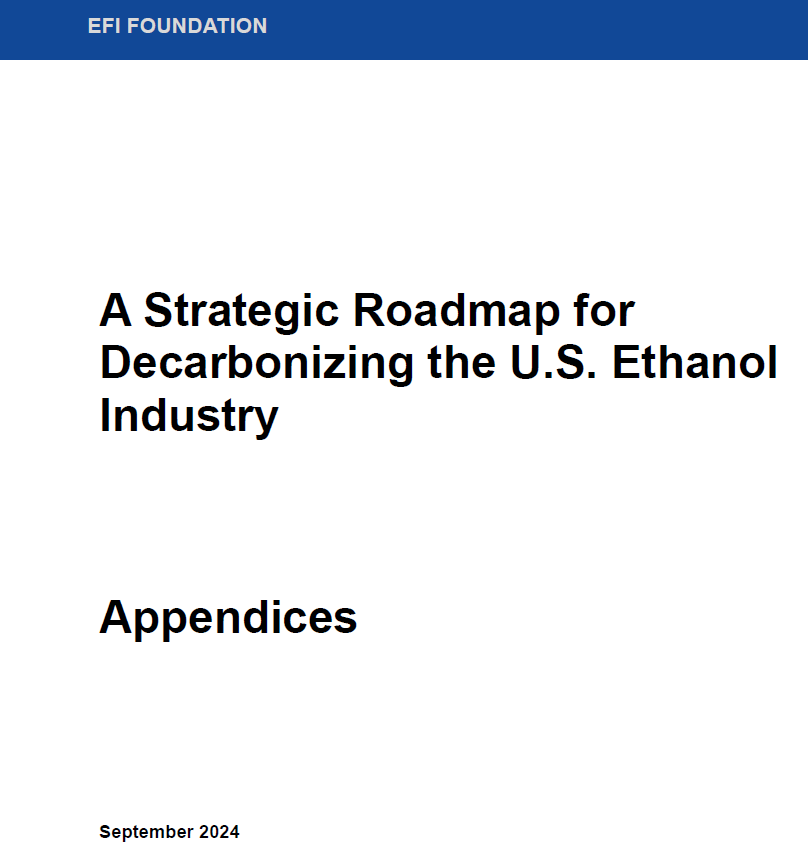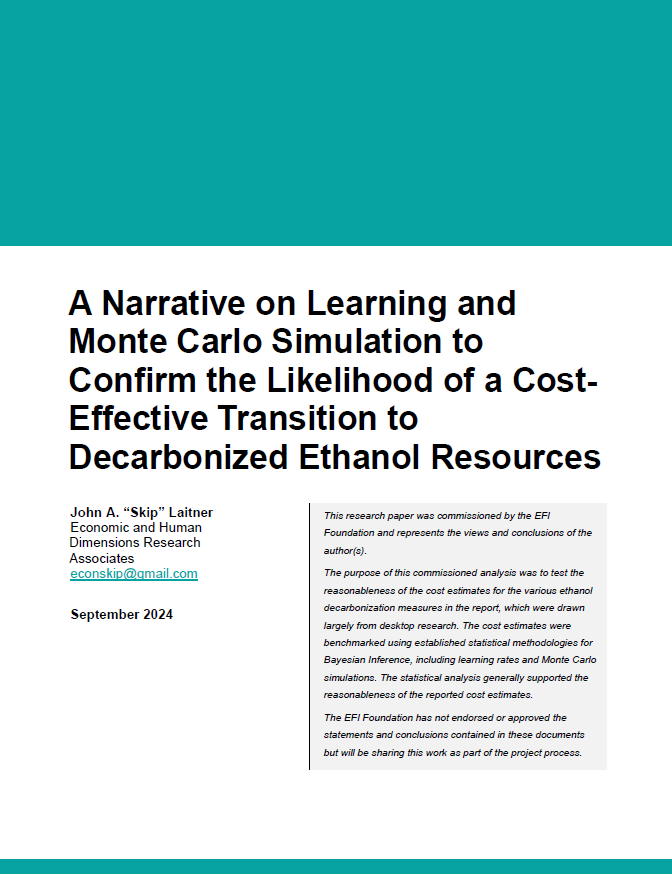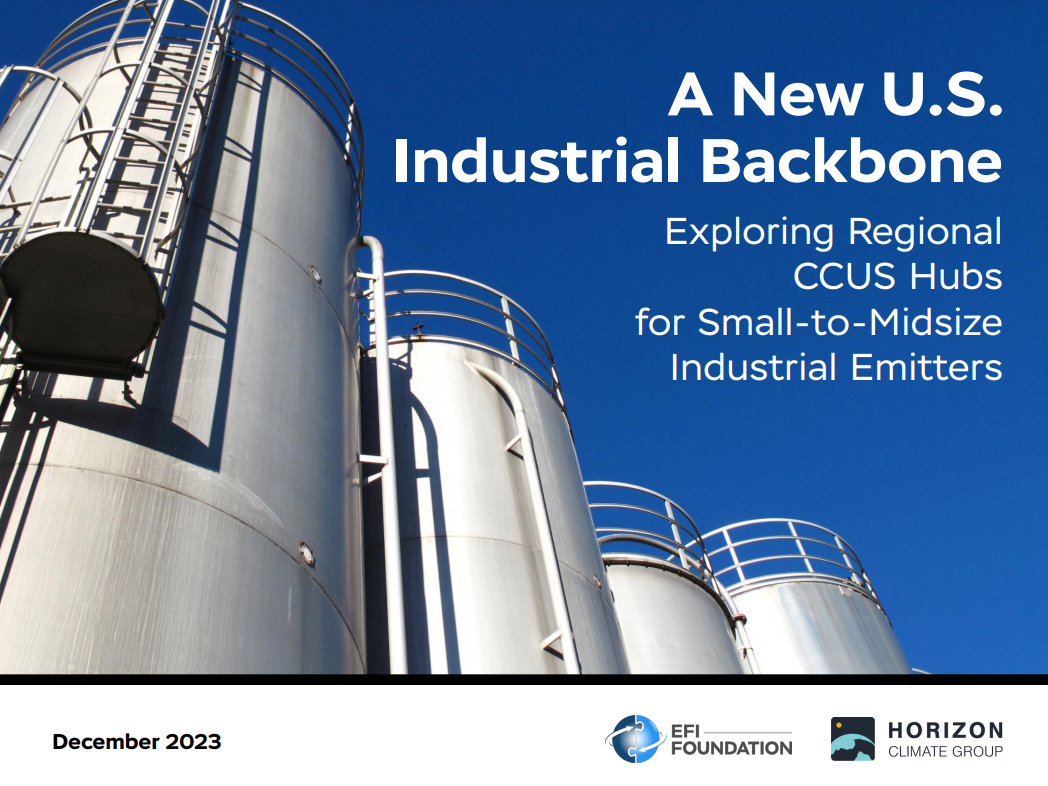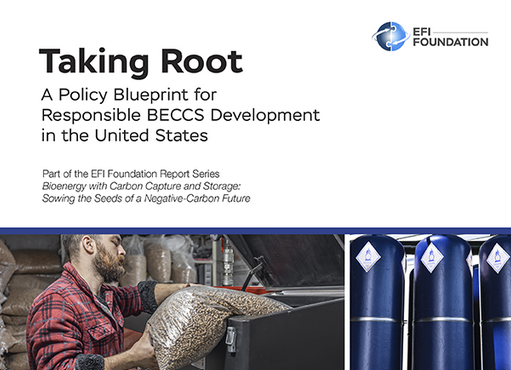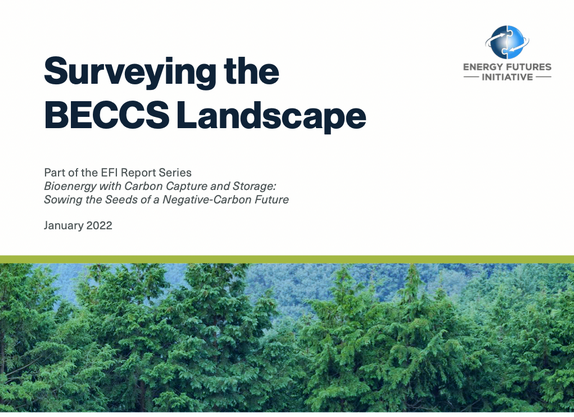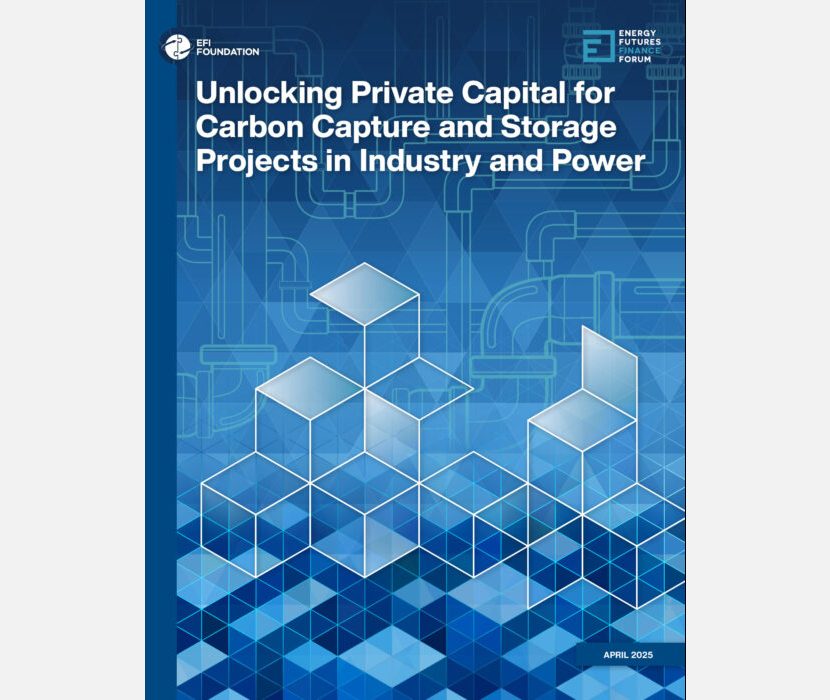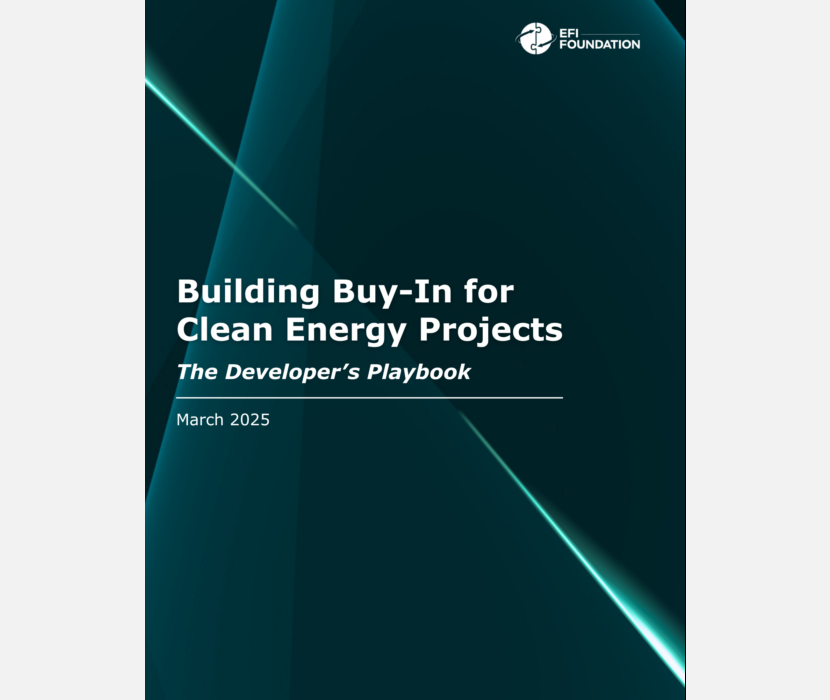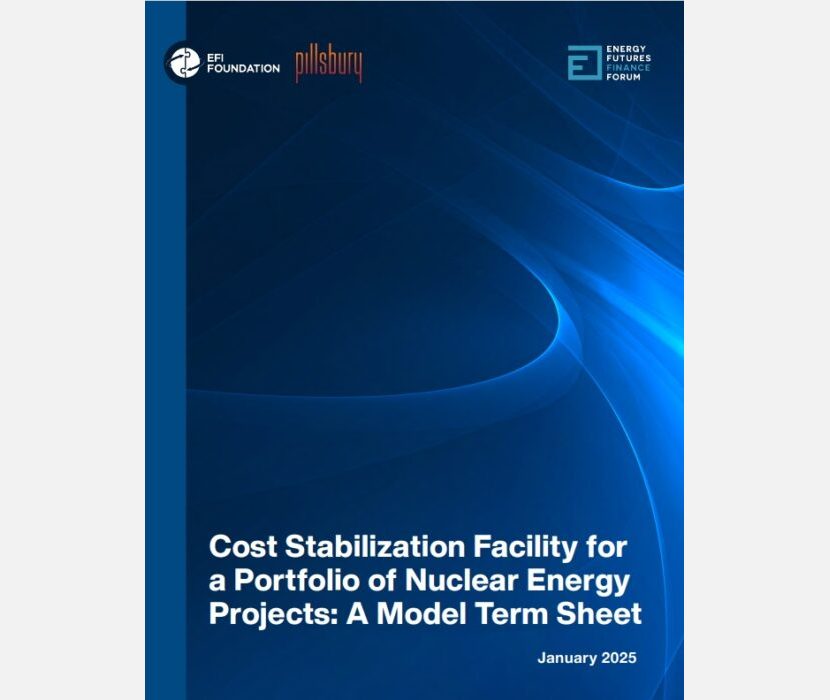A Strategic Roadmap for Decarbonizing the U.S. Ethanol Industry (September 2024) presents a roadmap to further decarbonize the U.S. ethanol industry. The roadmap includes a portfolio of actions that can help the industry reach net-zero emissions and beyond.
Ethanol has been the leader in the move to low-carbon fuels, as long-standing attempts to develop other advanced low-carbon liquid fuels have not succeeded in achieving scalable production at an acceptable cost. Ethanol is a vital component of U.S. rural economies that contributed over $57 billion to the national gross domestic product (GDP) in 2022. Ethanol accounts for 28% of U.S. farming GDP alone while sustaining over 420,000 jobs. Not only is ethanol the most commonly produced and used biofuel in the United States, but the nation produces over half of the global ethanol supply.
While ethanol has much lower carbon intensity than conventional fuels, considerable room for decarbonization still exists. The corn-to-ethanol industry currently produces an estimated 64.9 million tons per year of carbon dioxide emissions over its life cycle, or about 1% of total U.S. emissions. Reducing ethanol’s carbon intensity will increase its contributions to decarbonizing the U.S. transportation sector.
EFIF’s assessment demonstrates that there are a variety of strategic options that can significantly reduce ethanol’s carbon intensity. The roadmap has outlined a series of ready-to-adopt and low cost—or even negative-cost—measures for farmers and biorefiners, including employing climate-smart agricultural practices, carbon capture, utilization, and storage (CCUS) in the fermentation process, and introducing a combined heat and power (CHP) system running on biomass.
Our analysis presents two strategic pathways that the ethanol industry could take to achieve net-zero or even negative emissions by midcentury:
- Net-Zero by 2050 Pathway: ready to adopt and relatively low-cost measures to reach net-zero emissions by midcentury, with substantial progress toward that goal by 2035.
- Deeper-Decarbonization Options: additional measures with relatively higher or uncertain costs, with a wide range of estimates, or not yet ready-to-adopt, to reach almost net-zero emissions by 2035 and negative emissions by 2050.
Current incentives provide a foundation for ethanol decarbonization but are not enough on their own. Additional policy measures will accelerate the adoption of the strategic decarbonization roadmap for the ethanol industry to reach net-zero carbon intensity and move beyond. This report makes thirteen recommendations to ethanol producers, Congress, the administration, USDA, DOE, IRS, EPA, and state governments in the areas below:
- Support for expanding farmers’ adoption of climate-smart agricultural practices
- Longer-term and flexible clean fuel production tax credit
- Seek opportunities to decarbonize process heat and electricity use
- Support decarbonizing fertilizer production
- Demand-side mandates for clean fuels
Supplemental Material
Related Content
(Share this post with others.)


